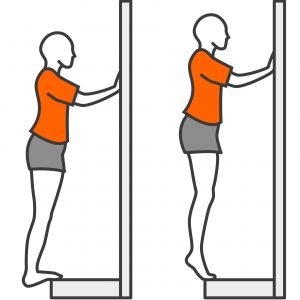3 Stretches for Plantar Fasciitis Relief
Plantar fasciitis is one of the most common causes of heel pain and one of the most frustrating. The good news? The right stretching routine often brings significant relief.
In a recent reel, Dr. Sam demonstrates three simple but highly effective stretches that target the plantar fascia and the muscles behind your lower leg (the posterior musculature), which play a major role in heel pain.
Below is a full walkthrough of each stretch, how to do it safely, and what the research says about stretching for plantar fasciitis.
Why These Stretches Work
The plantar fascia doesn't act alone. When the calf muscles (gastroc and soleus) tighten, they increase tension on the heel and arch which makes plantar fasciitis worse.
Studies have shown:
Calf stretching reduces plantar fascia strain and improves symptoms over time.
Source: Arif et al., 2022.
Plantar fascia–specific stretching is highly effective for pain reduction.
Source: DiGiovanni et al., Foot & Ankle International, 2003.
Short-duration static stretches (~30 seconds) improve flexibility without overstressing the nerves or soft tissue.
Source: Alhammoud et al., 2021 (UAE study referenced in Dr. Sam’s earlier video).
Stretch #1: Gastrocnemius (Gastroc) Wall Stretch
Targets: Upper calf + plantar fascia
Best for: Morning pain, tight calves, heel pressure when walking
How to do it:
Stand facing a wall.
Put the leg you’re stretching behind you.
Keep the knee straight and heel firmly on the ground.
Lean gently into the wall until you feel a stretch in the upper calf.
Hold 30 seconds.
What it does:
This stretch targets the gastroc, one of the biggest contributors to plantar fascia tension.
Stretch #2: Soleus Wall Stretch
Targets: Deep lower-calf muscle (soleus)
Best for: Pain after activity, stiffness during the day
This is a small modification of the first stretch—but hits a completely different muscle.
How to do it:
Start in the same position as Stretch #1.
Keep the affected leg back.
This time, bend the back knee slightly, keeping the heel down.
Lean gently toward the wall.
Hold 30 seconds.
What it does:
Bending the knee isolates the soleus, a deeper muscle that often goes untreated in plantar fasciitis routines.
Stretch #3: Calf Drop on a Step (Advanced)
Targets: Gastroc + soleus + plantar fascia
Best for: Patients with good balance and low pain levels
Use caution if: You have balance issues, Achilles problems, or severe plantar fasciitis
Dr. Sam calls this one “dangerous” because it can overstretch sensitive tissues if you’re not ready for it. Many patients benefit from it, but it requires caution.
How to do it:
Stand on a stair or sturdy platform.
Place the ball of your foot on the edge, heel hanging off.
Slowly lower your heel until you feel a stretch through the calf and arch.
Hold up to 30 seconds.
If you feel sharp pain—stop immediately.
What it does:
This is one of the strongest overall stretches for the plantar fascia and calf complex, but it should only be used when basic stretches feel comfortable.
Tips for Safe & Effective Stretching
✔ Stretch daily
✔ Hold each stretch for 30 seconds
✔ Never bounce
✔ Stop if you feel numbness, burning, or sharp pain
✔ Combine stretching with supportive footwear and strengthening for best results
When to See a Doctor
If you’re still having heel pain after 3–4 weeks of daily stretching or your pain is worsening, it’s worth getting evaluated. Plantar fasciitis can sometimes involve:
Tight Achilles tendon
Heel spur
Nerve irritation
Gait or biomechanics issues
Poor support from shoes or orthotics
At AM Physicians, we specialize in treating foot and ankle problems with both medical and whole-body approaches.
We’re Here to Help
If your heel, foot, or ankle pain is interfering with your day:
📞 Call AM Physicians
📍 Serving the Columbus area
💬 Same-day and next-day appointments often available
Let’s get you walking comfortably again—one step at a time.


